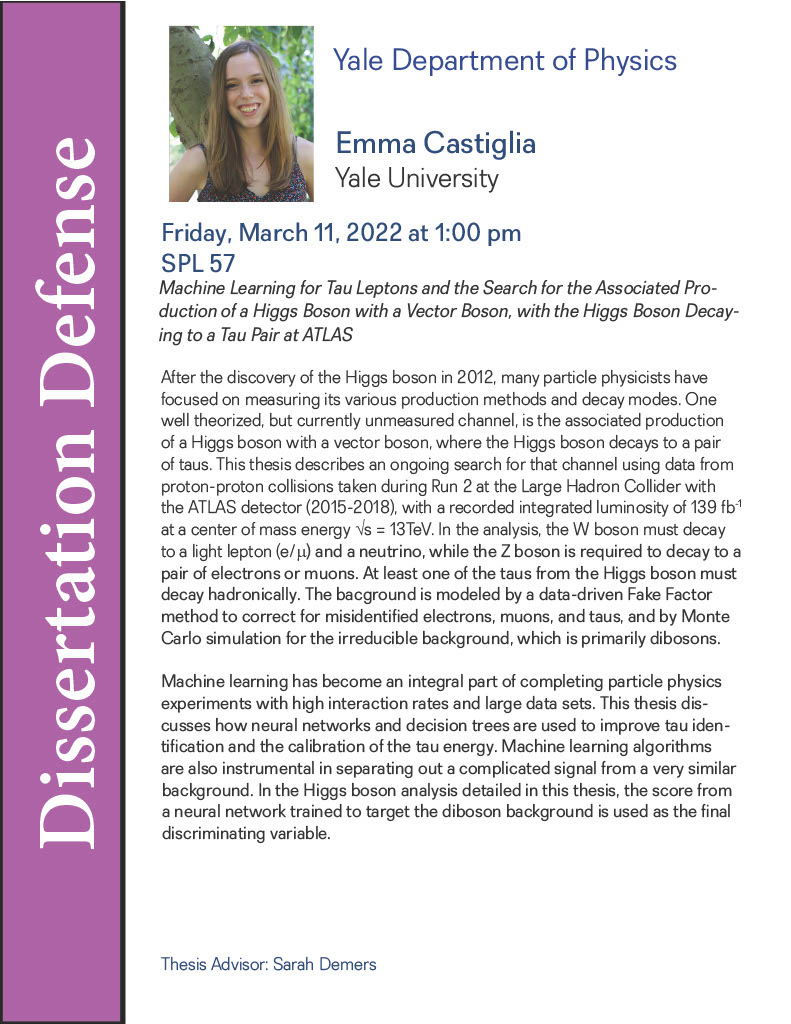Yale Department of Physics
Dissertation Defense - Emma Castiglia, “Machine Learning for Tau Leptons and the Search for the Associated Production of a Higgs Boson with a Vector Boson, with the Higgs Boson Decaying to a Tau Pair at ATLAS”
Friday, March 11, 2022 at 1:00 PM
SPL 57 or via Zoom (email Emma Castiglia (emma.castiglia@yale.edu) for zoom link)
After the discovery of the Higgs boson in 2012, many particle physicists have focused on measuring its various production methods and decay modes. One channel that has previously only been measured at well below the observation threshold is the associated production of a Higgs boson with a vector boson, where the Higgs boson decays to a pair of taus. In this thesis, I describe an ongoing search for that channel using data from proton-proton collisions taken during Run 2 at the Large Hadron Collider with the ATLAS detector (2015-2018), with a recorded integrated luminosity of 139$fb^{-1}$ at a center of mass energy $\sqrt{s}=13$TeV. In the analysis, the W boson must decay to a light lepton (e/$\mu$) and a neutrino, while the Z boson is required to decay to a pair of electrons or muons. At least one of the taus from the Higgs boson must decay hadronically. The background from misidentified electrons, muons, and taus is modeled by a data-driven Fake Factor method. The remaining backgrounds are primarily from dibosons, and these are modeled with Monte Carlo simulation.
Machine learning has become an integral tool across many experiments in particle physics, including the ATLAS experiment. In this thesis, I describe how neural networks and decision trees are used to improve tau identification and the calibration of the tau energy, as well as ongoing studies for future improvements. Machine learning algorithms are also instrumental in separating out a complicated signal from a very similar background. In the Higgs boson analysis detailed in this thesis, the score from a neural network trained to target the diboson background is used as the final discriminating variable.
Thesis Advisor: Sarah Demers
